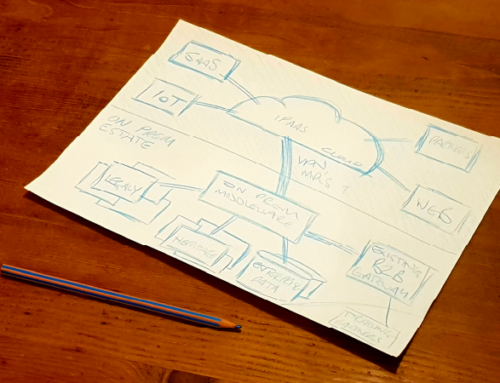Data Literacy: A Critical Business Enabler

“By 2023, data literacy will become an explicit and necessary driver of business value, demonstrated by its formal inclusion in over 80% of data and analytics strategies and change management programs.”
From: 10 Ways CDOs Can Succeed in Forging a Data-Driven Organization, © 2020 Gartner
In the decade and a half since Clive Humby coined the now over-used phrase “data is the new oil”, we’ve seen an exponential growth in the amount and type of data that companies manage. Effective enterprises, large and small, now understand that to remain competitive, they must treat their data as a valuable asset, putting in place good data management practices to ensure safe, secure and good quality information.
Despite this awareness, however, most organisations still struggle to achieve a level of data quality that is sufficient for their needs. So why are my reports still inaccurate? Why is our data not up-to-date? Why can’t we trust our data the way we would like to?
The answer is simple: it’s likely that most people in the organisation simply don’t “get it”.
I’m sure that top-level executives in your organisation understand the critical importance of good data. After all, they are the ones accountable for making accurate decisions, for running efficient processes and for ensuring compliance. The trouble is, they’re not the people that actually handle the raw data. They’re not the ones responsible for data collection, recording, cleansing, cataloguing, security. The rest of the workforce are the true custodians of your data, but in our experience most organisations don’t do anything to ensure this wider cohort is data literate.
The problem with this is that if you don’t apply good data management principles at source, at the ‘get-go’ as it were, you end up collecting poor quality raw data. You build up “data debt” – data quality issues that will take much more effort to clean up at a later date, before you can actually trust and use the data to make accurate decisions and run your business effectively. And the individuals responsible for data “at source” are usually the operators – the doers – the people that aren’t particularly interested in reporting and management; they are just trying to get their job done as efficiently as they can.
A couple of examples will illustrate the point:
Example: Stock Management
You’re at the supermarket checkout – the cashier has trouble scanning one of your items in the basket. There’s a similar item variant for the same price so they scan that one twice instead. All good – you paid the right price and the cashier ‘dealt with’ the operational problem and moved on. Operationally it works for now, but now your transactional data is wrong. This causes issues later on. In this case, for example:
- Stock levels are incorrect for both the item you took away and the item that was scanned twice.
- Reports are incorrect, indicating too much of one item has been purchased and too little of another.
- Demand planning will be inaccurate with items appearing more, or less, popular than they actually are.
- The returns process won’t work without intervention because you receipt doesn’t match your actual purchase.

Example: Customer Data Breach

It’s all over the news; details of a company’s customer accounts have been published online by a hacking organisation. They got the details by hacking into a poorly secured database holding unencrypted information. In this case, that database was set up by a customer insight department that simply wanted an easy place to access data for their BI reports. They took an export from their online CRM database and got someone in their department who was a bit “technical” to create a dataset in the cloud. This allowed everyone to access the data wherever they were, which was especially useful given that everyone was working from home due to COVID-19. Unfortunately, “everyone” in this case really meant everyone – on the entire internet… IT had rules and regulations about this sort of stuff but, apparently, it would have taken so long to go through them that significant business opportunities would have been lost.
Don’t Blame the Team
Simple, innocent decisions can lead to poor quality data. Here’s the thing: if you haven’t explained to the operator why the protocols are in place, then at some stage they will inevitably use their initiative to get round operational issues in ways that impact data quality. They’re just trying to do what’s best for the company, right?
People will always bend the rules if they think it is for the greater good of their company (and for other reasons but let’s not muddy the water here – you only employ honest individuals in your company, right?).
Putting it Right
In the case of our supermarket operative, improving data capture at source is the most cost effective way to ensure high data quality. That’s not rocket science; it follows good, well documented and understood lean principles; data errors are defects and the best place to deal with them is at the time they occur; not to hide them and deal with them later down the line.
As for our marketing team, there is no excuse for breaking the rules, if you understand them, and the risk of non-compliance can be devastating. Did the customer insight team really understand the risks associated with the approach they were taking? If they had done, would they still have taken it?
The only reliable, enduring way to minimise undesirable behaviours is to educate your workforce in the importance of looking after the data they process. And that extends throughout the organisation – from the C-suite right down to the operators on the front-line. A truly digital, data-driven organisation will only reach peak effectiveness if the entire workforce is data literate, not just the management and executive teams. An appropriate level of data literacy training should be part of the induction process for every worker.
Act Now!
Culture and data literacy are now the top two roadblocks identified in the Gartner report at the top of this article, so has your company taken steps to actively educate its workforce?
If you’d like to understand more about this subject, and how Wheeve can help your organisation improve its data literacy, then please contact us via email at [email protected], phone on 01923 590095, or fill in our contact form.








